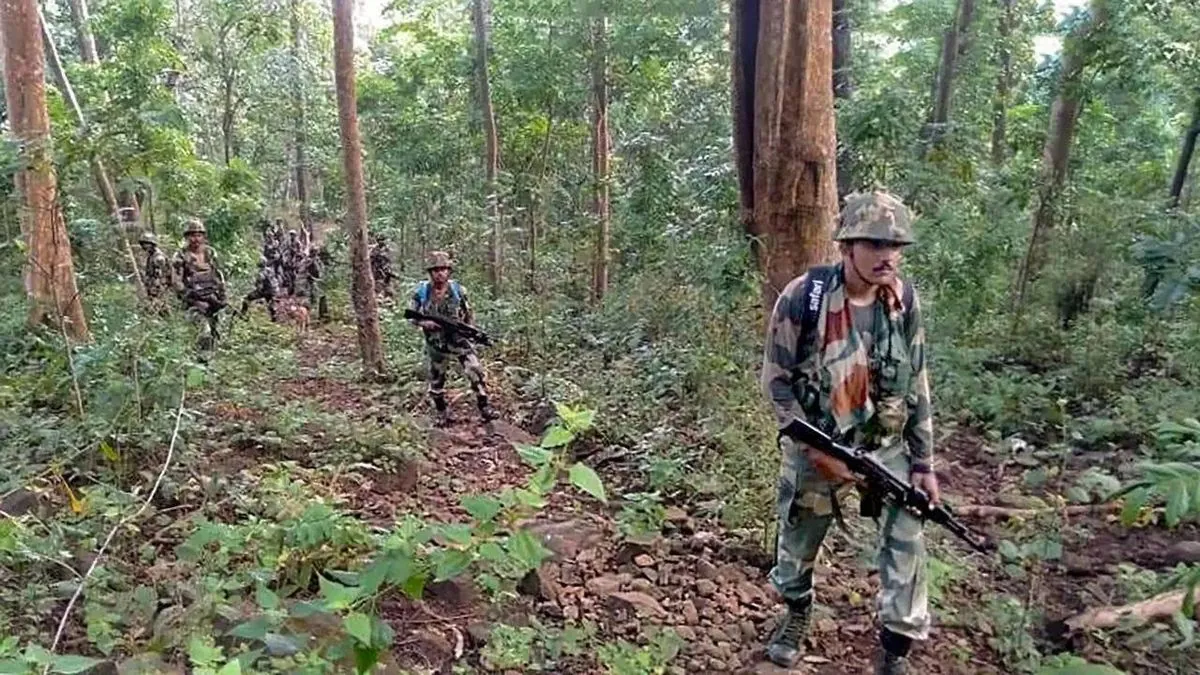In a significant development in India's ongoing struggle against left-wing extremism, Indian security forces engaged in a fierce battle with suspected Maoist rebels in the central state of Chhattisgarh. The confrontation, which occurred on October 4, 2024, resulted in the reported deaths of 31 insurgents.
The clash took place in the Abhujmaad forest area, a region known for its dense vegetation and challenging terrain, straddling the border between Narayanpur and Dantewada districts. This area has long been a stronghold of Maoist activity, forming part of what is often referred to as the "Red Corridor" due to the rebels' communist ideology.
According to Pattilingam Sundarraj, the state police Inspector General, the operation was initiated on October 3 based on intelligence reports. The ensuing battle lasted approximately nine hours, with counterinsurgency troops cornering an estimated 50 suspected rebels. In the aftermath, security forces recovered various arms and ammunition, including automatic rifles.
The Naxalite-Maoist insurgency, which began in 1967 in the village of Naxalbari, West Bengal, has been ongoing for 57 years and is considered India's most significant internal security threat. The movement, inspired by Chinese revolutionary leader Mao Zedong, advocates for the rights of marginalized communities, particularly the Adivasis (indigenous people) who comprise about 30% of Chhattisgarh's population.
Chhattisgarh, formed in 2000 from the southeastern districts of Madhya Pradesh, has been at the epicenter of this conflict. Despite its abundant mineral resources, including iron ore, coal, and bauxite, the state grapples with poverty and underdevelopment. The literacy rate remains below the national average, contributing to the complex socio-economic factors fueling the insurgency.
"This operation is a significant blow to the Maoist insurgency in the region. We remain committed to bringing peace and development to affected areas while ensuring the safety of our citizens."
The Indian government has implemented various development schemes and a "Surrender and Rehabilitation Policy" in an attempt to address the root causes of the conflict. However, the rebels often target infrastructure such as schools and health centers, hindering development efforts.
As of October 5, 2024, authorities report that 171 militants have been killed in Chhattisgarh this year alone. This recent clash follows another major confrontation in April 2024, where 29 suspected Maoist rebels were killed just days before India's national election.
The Maoist rebels, also known as Naxalites or Left Wing Extremists (LWE), employ guerrilla warfare tactics in their "protracted people's war." They have been known to ambush police, destroy government offices, and use improvised explosive devices (IEDs) in their attacks. In some remote areas, the Maoists have established parallel administrations, challenging state authority.
While this recent operation marks a significant development in the conflict, it also underscores the ongoing challenges faced by both the government and local communities in achieving lasting peace and development in the region. As the situation continues to evolve, the complex interplay of security measures, development initiatives, and addressing underlying socio-economic issues remains at the forefront of efforts to resolve this decades-long insurgency.
